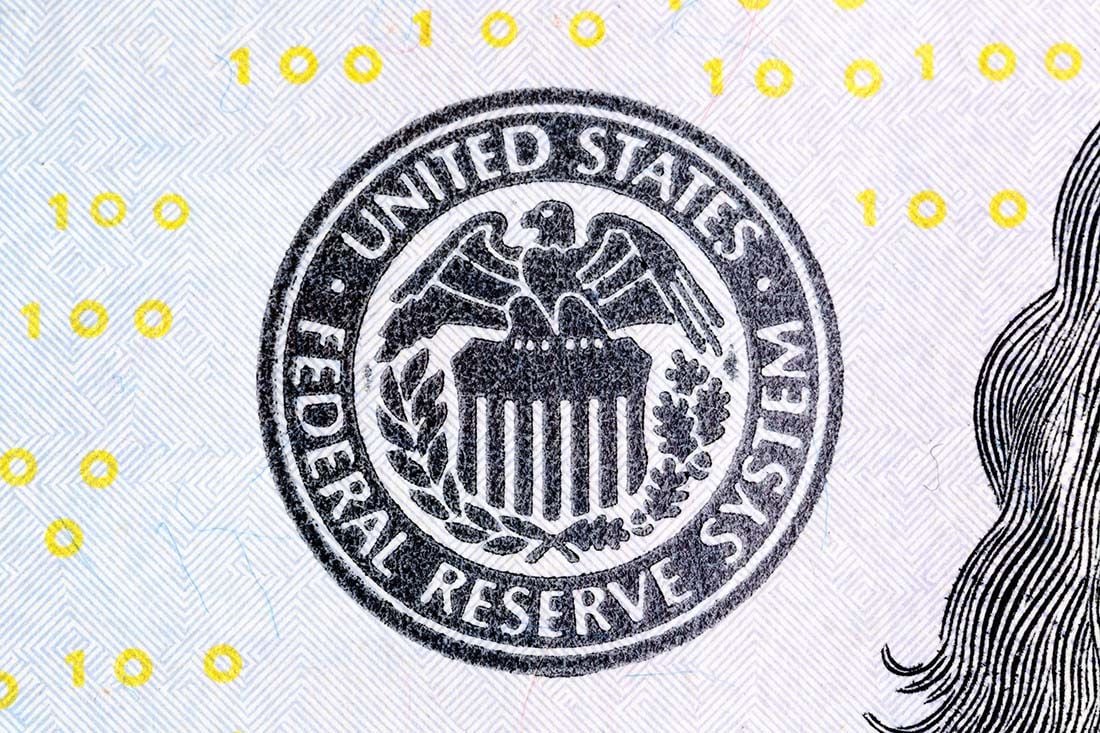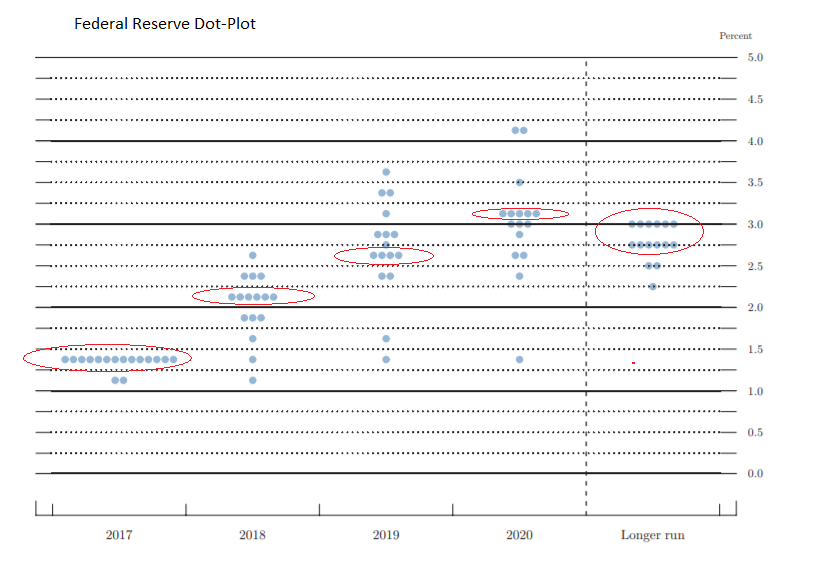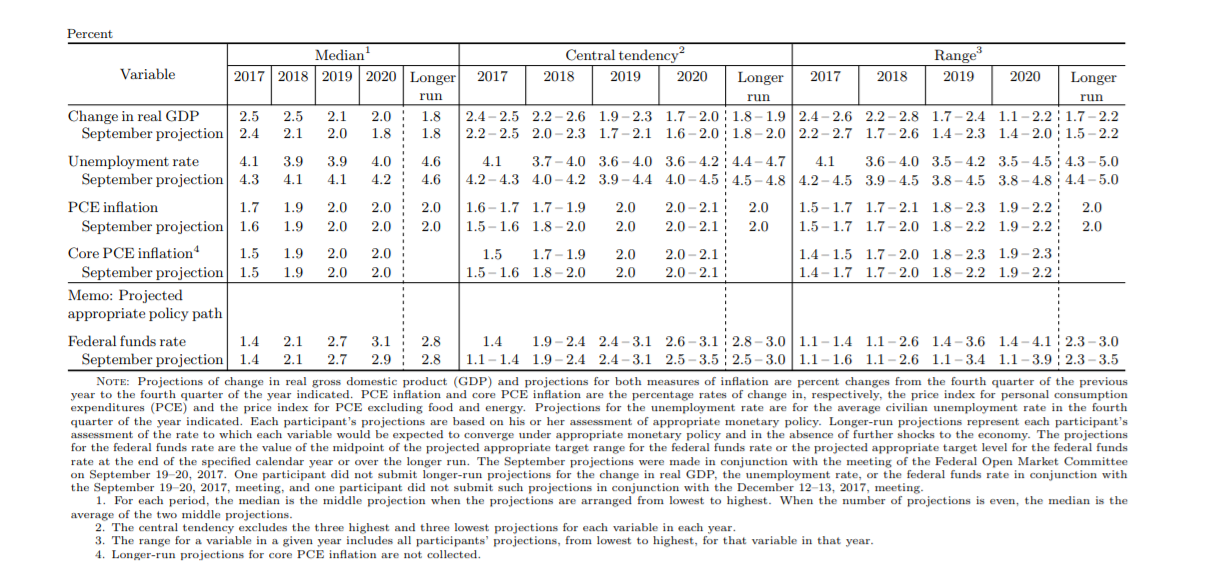The Dollar Today: Federal Reserve Rate Meeting Looms Large
- Interest rate rise a given
- What happens to the 'dot plot' graph is what will really matter for the Dollar
- Markets get their first taste of the Governor Powell era

© Dmytro Synelnychenko, Adobe Stock
The US Dollar may be biased to further gains should policy-makers at the US Federal Reserve today upgrade their economic projections.
The Dollar needs a 'hawkish' tinge to the event considering the pressure the currency finds itself under in preceeding hours; the GBP/USD exchange rate is seen trading higher by 0.45% at 1.4068 while the EUR/USD is up 0.32% at 1.2287.
The outcome of the Fed meeting is due at 18.00 GMT (14.00 Eastern Time), so expect some volatility in the Dollar exchange rate complex.
Markets are already expecting the Fed to raise interest rates from the current level of 1.50% to 1.75% - that is not at issue and this is priced into current Dollar valuations - what is more significant for the Dollar, are other less-well telegraphed alterations such as expectations for future interest rate rises.
The general consensus amongst analysts appears to be that the Fed could very well upgrade forecast projections for interest rates in the longer-term, and the extent to which this happens will be key with an unambiguous set of upgrades likely to see the Dollar pop higher.
The dot-plot is a graphic (see below) published on the Fed's website which shows where the various members of the Fed's interest rate-setting committee expect the base interest rate to be at given intervals in the future.

The current dot-plot (see above) shows where each member of the Fed, represented by a dot, thinks interest rates are likely to be in the future (X-axis).
I have circled in red the modal view (the most popular) for each interval. If that view or the dots in general shift substantially higher or lower it could impact on the Dollar.
"The Dollar could be pushed higher as a result of revisions to the Fed's projections, in particular, a potential increase in 2020 and longer-run dot projections. A rise in the dot plot impacts the dollar via the interest-rate expectations channel, which has been an important driver of FX returns this year," says Ben Randol, a G10 FX strategist with Bank of America Merrill Lynch Global Research.
The current dot-plot shows the majority of members expect interest rates to be 2.00-2.25% by the end of 2018, between 2.50-2.75 by the end of 2019, and between 3.0-3.25% in 2020.
BofAML expects the dots to move up after the meeting later today, especially for 2019 and 2020, as they don't think that the Fed has adequately factored in the impact of the government's recent tax reforms on raising economic growth in the medium-term.
Greater economic growth is likely to increase inflation which the Fed is tasked to control by raising interest rates.
A byproduct of higher interest rates is more inflows of foreign capital drawn by the promise of higher returns and this increases demand for the buck, which rises in value.
Analysts at ABN Amro also expect the dot-plot to rise reflecting higher interest rate expectations.
"We expect the median fed funds rate (dot-plot average) projection for 2019 to shift up to 2.9% from 2.7%, with 2018 unchanged. Expectations for a shift up in the dots have increased given a number of more centrist members on the committee have sounded somewhat hawkish of late (notably Dudley, Quarles, and Chair Powell himself)," says analyst Bill Diviney at ABN Amro.
The bank also expects an uptick in economic projections. the latest of which, which we have reproduced from the December meeting below.
"For the Summary of Economic Projections, we expect both growth and inflation forecasts to see upward revisions, with growth likely to see the biggest upgrades on the back of the fiscal boost from the Bipartisan Budget Act (current 2018 Fed forecast: 2.5%; ABN AMRO: 3.0%; 2019 Fed: 2.1%; ABN AMRO: 2.7%). The upgrade to inflation forecasts is likely to be more modest and mechanical (in the 0.1-0.2pp range)," says ABN Amro.
Powell's Allegiance, Active Vs Passive Fed
Today's meeting is also the first chaired by the new governor of the Fed Jerome (Jay) Powell, and it will give investors the first indication of his leadership agenda and also, the extent to which he may be controlled by Washington, since, in the end, he was the candidate selected by President Trump, and he is a known republican.
"One other important message to take from Powell’s press conference: over the past few months news flow from the White House has had significant effects on the USD exchange rates," says Ulrich Leuchtmann analyst at Commerzbank, adding, "so what will also matter tonight is what impression the Trump-nominated Powell leaves as regards his independence from the White House."
For Commerzbank the real focus will be on whether the Fed has finally thrown off the shackles of post-financial crisis monetary policy in which interest rates have remained rock-bottom with little change, which he calls 'passive'; or whether it is embracing 'active' monetary policy, which refers to the old style pre-f-crisis central banking in which the Fed altered interest rates within a wide variance up and down quite frequently. Clearly, this is a different way of expressing a view about the long-term outlook for interest rates expressed in the dot-plot and the economic projections.
"At the moment the Fed is at the threshold towards a visible “activation” of its monetary policy. That is the main difference between the Fed on the one hand and the ECB or BoJ on the other. And it is relevant for USD exchange rates for two reasons:" says Leuchtmann.
The two reasons - to summarise a complex point - are that if the Fed is adopting an active policy it will likely propel both nominal (a) and real (b) interest rates higher, and given both a and b tend to support the USD, the result will most probably be a rally in the Dollar.
Get up to 5% more foreign exchange by using a specialist provider to get closer to the real market rate and avoid the gaping spreads charged by your bank when providing currency. Learn more here.





